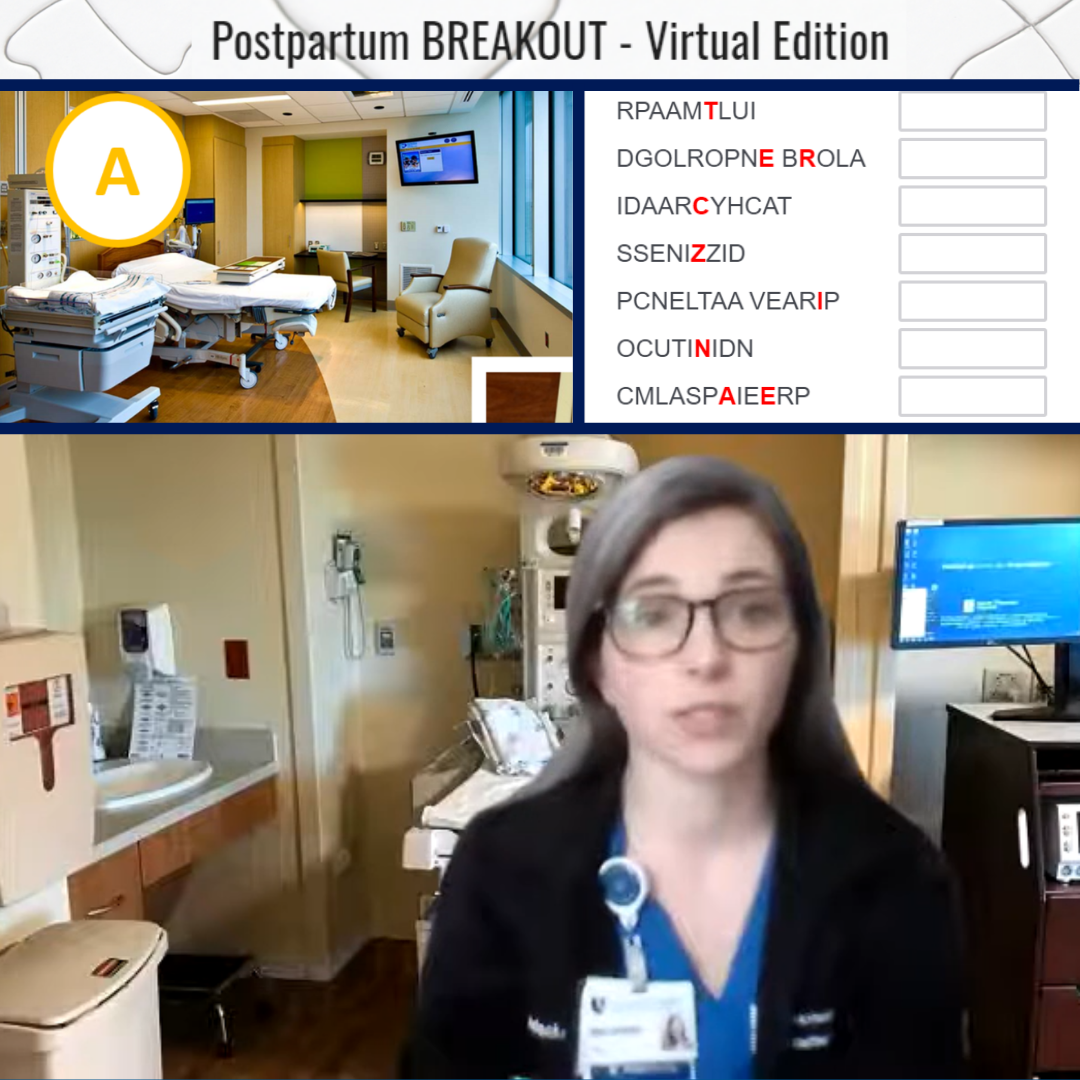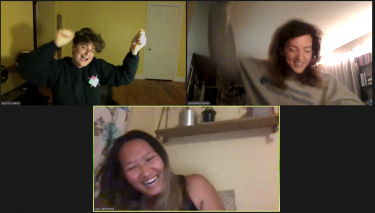Innovation in the Classroom: Virtual Escape Room

This year, a class of Accelerated Bachelor of Science in Nursing (ABSN) students experienced a whole new level of virtual learning when a virtual escape room was added to their class’ curriculum.
This online-based adventure was co-created by Jacquelyn M. McMillian-Bohler, PhD, MSN, BSN, CNM, CNE, assistant professor, for her second-semester ABSN class, “Nursing Care of the Childbearing Family.” Mackenzie Hengsterman-Cash, who was, at the time, a University of North Carolina Wilmington graduate student who McMillian-Bohler was precepting, played an integral part in creating the escape room; she graduated in May.
The class that met over the summer was the first to participate in this experience; the next class that will try out this room will occur in the spring. The experience is hosted on Sakai and is intended to reinforce the student’s knowledge on postpartum and newborn assessments.
 “Learning should be fun, and, in order to make things fun, you have to have a little bit of the unexpected and a different perspective for how you think about things,” McMillian-Bohler said. “I like to present information in different ways because it allows the learner to do things outside the box and not always on the straight and narrow path.”
“Learning should be fun, and, in order to make things fun, you have to have a little bit of the unexpected and a different perspective for how you think about things,” McMillian-Bohler said. “I like to present information in different ways because it allows the learner to do things outside the box and not always on the straight and narrow path.”
The experience
When students open the platform, they are first prompted to fill out a pre-knowledge assessment. The assessment serves as a preview of the topics the room will cover, according to McMillian-Bohler.
After students read through a list of helpful tips, they are requested to watch a video. As it does in a real-life escape room, the video sets up the plot. In this case, it shows a “night-shift RN,” played by Hengsterman-Cash, debriefing the viewer on the patient and her condition as if the viewer were a nurse starting their shift; the “patient” is a new mom, age 37, who was induced at 40 weeks and has a baby boy.
Once the students finish the video, they are ready to “enter” the room, where they are met with a series of challenges and puzzles. The students have to unlock each puzzle and challenge in order to proceed through the room. The overall experience can range from 20 to 45 minutes, but McMillian-Bohler stressed that has more to do with the student figuring out how to unlock the puzzle than not knowing the information.
A “Congratulations” music video greets students when they’ve successfully “escaped” the room. Students are also requested to take a post-test to further reinforce the information. In similar fashion to an in-person escape room, the virtual escape room is designed for students to complete in teams.
Samantha Adrian used the experience as a way to wind down after a long week of classes. She was joined by two other students, Aurora Gaines and Aye Sutherland.
“The format gave us a break from the Zoom lecture and textbook formats and presented the information in a novel, engaging way. The format is also great because it allowed us to work in small groups and interact,” she said. “Each of us was really good at certain types of puzzles and bad at others, so it made for a really fun dynamic. For example, I’m horrible at word scrambles but am really good at math puzzles.”
The students aren’t timed or graded and can circle through the room as many times as they wish.
“It was a very low stress, social way to reinforce maternity concepts,” Adrian said. “I love that sense of camaraderie, fun and, sometimes, shared frustration over trying to solve a puzzle. I could really tell that there was a lot of time, energy and love put into making it.”
 When the "Congratulations" video appeared, Adrian, Gaines and Sutherland took a moment to celebrate their hard work of completing the room, as shown in this screenshot.
When the "Congratulations" video appeared, Adrian, Gaines and Sutherland took a moment to celebrate their hard work of completing the room, as shown in this screenshot.
The creation
McMillian-Bohler was starting to conceptualize the escape room when she got the request from Hengsterman-Cash to be her preceptor. In order to give Hengsterman-Cash the credit she needed, McMillian-Bohler brought the student on board the escape room project.
After doing some research on how to build an escape room, the two got together to start mapping out the puzzles and challenges and creating the room for an in-person format. Then, the pandemic happened. However, that didn’t discourage the two from their plans. They pivoted and constructed the room on a Google platform. It was then beta tested and reviewed by three ABSN students who had completed the “Nursing Care of the Childbearing Family” class.
 After applying the students’ feedback, the next step was to spruce up the room visually and make the transitions smoother. That’s where Tina Johnson, educational technology manager, entered the process.
After applying the students’ feedback, the next step was to spruce up the room visually and make the transitions smoother. That’s where Tina Johnson, educational technology manager, entered the process.
“Within probably two weeks, she transferred everything to Sakai, which made it easier to use, especially in terms of the pre- and post-tests and some of the other logistics,” McMillian-Bohler said.
When the students in the spring run through the room, McMillian-Bohler said she intends to gather some data to better assess its success.
“We have wonderfully bright students and wonderful resources at Duke,” she said. “I'm trying to light a little fire within them, and I try to do that through creativity. Hopefully it catches, and that these students then go on and do things that I would never even imagined.”